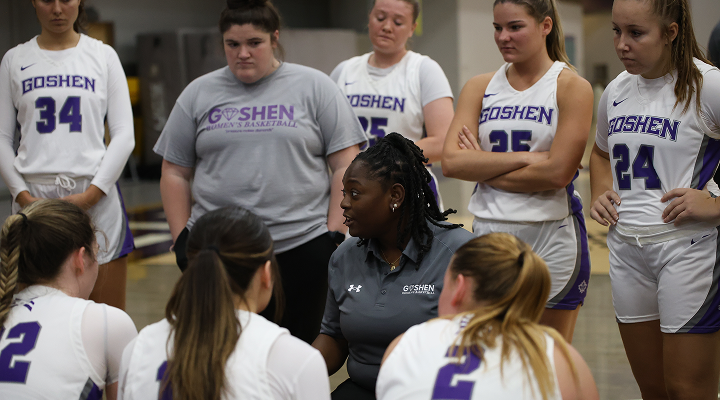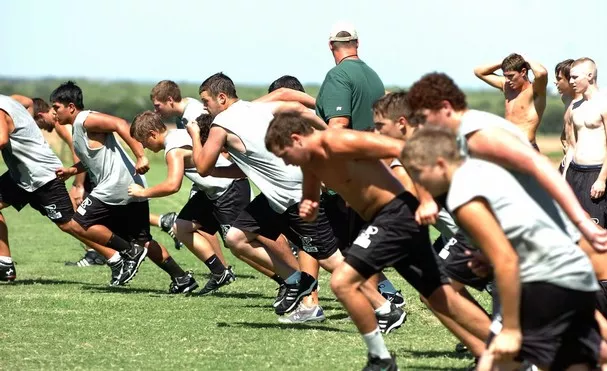Basics of Conditioning for the Strength & Power Athlete
Many of us have heard the advice from the jacked gym bro at your local health club.
“Don’t do cardio, bro, it’ll make you small and weak!”
Or the favorite among the strength community:
“Anything over 5 reps is cardio."
The idea that cardio or “conditioning” of any kind will negate your strength and hypertrophy gains is simply absurd and needs to be cast out as quickly as possible. The fact of the matter is that most people who are worried about losing their strength and muscle mass due to conditioning have not looked into the science backing conditioning or evidence that the right structure of training can make conditioning sessions an effective strategy for strength and power. Let's take some time to talk about the basics of conditioning for the strength and power athlete now.
Background
Stemming from many recommendations from the medical community, the common mode of cardiovascular training or “conditioning” is something to the tune of “30 minutes of moderate intensity aerobic physical activity for a minimum of five days each week or vigorous intensity aerobic physical activity for a minimum of 20 minutes on three days each week” (ACSM, 2000). While I agree this recommendation is sound for the general population, what about the strength & power athlete? If the goal for the trainee is to be as big, strong and fast as possible, this basic recommendation will not be adequate.
When it comes to understanding the basics of conditioning for the strength, power & speed trainee we must first look at understanding the energy systems of the body. Simply put, our body dedicates energy to three types of training:
- Anaerobic Alactic System: High Intensity, short burst (~6-12s), relies on creatine-phosphate (CP) for energy.
- Anaerobic Lactic System: Moderate Intensity, medium duration (~30s-3min), relies on carbohydrate as primary fuel source.
- Aerobic System: Low Intensity, long duration, relies on oxygen to produce ATP, but can utilize fats and carbohydrate as well.
Now, one thing to remember is that these three energy pathways do not function as a hard stop/start during the time domains outlined. These different fuel sources for activity represent a continuum more than hard and fast rule. These also depend on personal fitness levels of the individuals being trained.
Understanding Your Training
The next step to building your conditioning program is understanding your current training as well as the fitness demands of your personal goals. In this context we are using the term “fitness” to describe the quality of being suitable to fulfill a desired role or task. This means that if you plan to be a shot putter you do not need to train to have the aerobic endurance of a marathon runner. However, you also cannot neglect general aerobic training to the extent that you cannot make it through a full event practice without a serious deterioration of the technical qualities you are training. As mentioned previously, everything must exist on a continuum.
Using the same example of the shot putter, your training exists in almost an exclusive anaerobic-alactic training environment. Most of your training probably happens using maximal effort strength training or dynamic effort strength training. Both of these are examples of anaerobic-alactic energy system training. If your training consists of these, then your athletes' "event" happens in less than 5 seconds.
So, looking at the training of a shot putter, we can approach the conditioning for this athlete two ways. The first way is to continue to hammer the anaerobic-alactic system. For example, short duration bike sprints with long rest (ex. 6s sprint with 1:12 rest) for two sets of ten. Sprints with 5 minutes rest between sets are an example of what an alactic-aerobic conditioning session may look like. This will continue to build the athletes ability to sprint hard for a short duration and recover to then repeat the effort for however many reps are assigned. The other way to look at conditioning these athletes is to focus solely on the aerobic energy system. The aerobic energy system is activated when recovering from moderate intensity to high intensity bouts of training. By building a large aerobic base the athlete will have a greater ability to recover from their sport practice (throwing the shot put) and their other general physical prep training (maximal and dynamic effort weightlifting).
How do we then go about developing the aerobic energy system in a way that will enhance the training of our shot put athlete without taking such a toll on the body and energy supplies needed to practice their sport?
Looking at the training cycle of the athlete, the period of training furthest from competition will be where we place the largest emphasis on the development of the more general qualities. This is where more higher volume lifting takes place, extensive medicine ball throws, sled pushing and pull, bodybuilding circuits and aerobic circuit training can be added to training in the absence of high volumes of throwing (event practice).
As we advance from the offseason general preparation period into the preseason we can transition from more general means of training to more specific means. During this period, we will transition to more event practice. While staying with our theme of aerobic development for the shot put athlete, we can make our prep work specific to our event. The use of event specific technical drills done with limited rest periods will have an aerobic effect on the athlete while beginning to develop movement competency in their specific event. For the rotational shot put thrower this may look like:
All drills will be performed in three sets of ten repetitions with thirty seconds rest between sets
- 90 degree rotations (back of the ring)
- 180 degree rotations (back of the ring)
- 360 degree rotations (back of the ring)
- 270 degree rotations w/ step to middle of ring (transition)
- Half Turn Drill (transition)
- Right Foot Rotation (Front of Ring)
While for the average general population trainee this may not seem like aerobic training, remember that this athlete operates almost purely in an anaerobic-alactic environment. This volume of work will create the heart rate response needed to enhance the aerobic capabilities of the athlete while giving them ample time to begin to transition into the preseason and early competition period of the season.
While the point of this writing is to show different options for aerobic development training for a strength/power athlete, this athlete’s goal is to propel a 12lb (high school) or 16lb (collegiate/professional) ball as far as possible. We do not want to make them spend endless amounts of time working on general aerobic work such as incline walking when we can mix it in with their event specific practice.
While everything up to this point has been geared toward the shot put athlete but Let’s look at competitive powerlifters:
While many people in this community swear against aerobic training, the benefits to the overall health of the lifter as well as the performance benefits mentioned for the shot putter above (decrease time to recovery between sets/reps/sessions, increase of quality training volume) with a minimal amount of aerobic activity far outweigh the fear of “loss of gainz, bro."
Looking at the methodology outlined from Science and Practice of Strength training (Zatsiorsky & Kraemer, 2006), a first method can be used within the athletes current training. The repetition effort method is weight training at submaximal intensities for maximal repetitions to failure or near failure. For example, on a maximal effort or dynamic effort lower body day after the athlete performs their working sets of main movement, they would execute four sets of fifteen reps of glute ham raises with thirty to sixty seconds of rest. It can also be done as a warm-up prior to the training session. Utilizing exercises that will specifically prep the trainee for the main movement of the day. Executing them in circuit fashion with similar volumes (four sets of fifteen to twenty reps) will not only prep the athlete for the training session but increase the overall capacity of the athlete. This method has been popularized by Matt Wenning.
A third means of increasing overall work capacity for the powerlifter or weightlifter would be adding smaller workouts or “mini sessions” between main workouts. In Joe Kenn’s Tier System training these are known as Blitz Sessions. These mini sessions will be short and to the point. They can be done with 2-3 exercises. For each exercise you will execute 12-15 reps with minimal rest between sets. They can also be done using a sled for concentric only training to promote greater recovery from the main sessions while continuing to work on the athlete’s weak points. An example of one of these sessions would consist of the following:
- Forward Sled Drag x 25yds (90lbs)
- Sled Face Pull x 25yds (90lbs)
- Forward Sled Drag x 25yds (90lbs)
- Sled Tricep Extension x 25yds (90lbs)
- 5 rounds for quality
As mentioned above, this is geared toward improving the work capacity of the power/strength athlete. The general fitness trainee will benefit from this, but it may not help you improve your Turkey Trot 5K time.
In conclusion, the aerobic energy system is not reserved for the hardcore endurance athlete. For the strength & power athlete the aerobic system will play an extremely large role in the athlete’s ability to recover from their strength training sessions or sport event practices. Even if it isn’t the emphasis of the athletes training regimen, proper stimulation of the athlete’s aerobic system will allow for greater training volumes which in turn will help the athlete have higher quality training.
References:
- American College of Sports Medicine. (2000). ACSM's guidelines for exercise testing and prescription. Philadelphia :Lippincott Williams & Wilkins,
- Zatsiorsky, V. M., & Kraemer, W. J. (2006). Science and practice of strength training. Champaign, IL: Human Kinetics.
Subscribe to our blog
Subscribe to receive the latest blog posts to your inbox every week.
Related posts

Woke Coaches Know Better Than Being the "Get Back Coach"

10 Female Strength Coaches You Should Know


